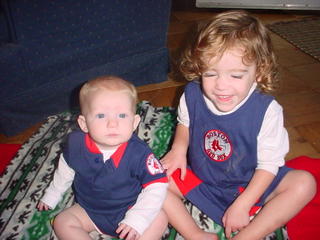william stringfellow
(seth, if you're reading this, go out and buy this book right now)
i won't give you all the biographical details (if you're curious), but he was a harvard law grad that moved to harlem to work w/ the poor, and instead of becoming a priest he just went about writing theology. perhaps the fact that few of his books are currently in print says something about how his message was received by the "powers and principalities" in the world (a topic he addresses repeatedly and with skill). nevertheless, i find him an original thinker who left us a cogent and quintessentially american theology.
just to give you an idea about how he thinks, some snippets from an essay about the circus (that's right) as eschatological community:
now why can't i think like that?the circus is among the few coherent images of the eschatological realm to which people still have ready access . . . . this principality, this art, this veritable liturgy, this common enterprise of multifarious creatures called the circus, enacts a hope, in an immediate and historic sense, and simultaneously embodies an ecumenical foresight of radical and wondrous splendor, encompassing, as it does both empirically and symbolically, the scope and diversity of creation . . . . it is in the performance that the circus is most obviously a parable of the eschaton. it is there that human beings confront the beasts of the earth and reclaim their lost dominion over other creatures. the symbol is magnified, of course, when one recollects that, biblically, the beasts generally designate the principalities: the nations, dominions, thrones, authorities, institutions, and regimes (see dan. 6).
there, too, in the circus, humans are represented as freed from consignment to death. there one person walks a wire fifty feet above the ground, another stands upside down on a forefinger, another juggles a dozen incongruous objects simultaneously, another hangs in the air by the heels, one upholds twelve in a human pyramid, another is shot from a cannon. the circus performer is the image of the eschatological person -- emancipated from frailty and inhibition, exhilarant, militant, transcendent over death -- neither confined nor conformed by the fear of death any more.






1 Comments:
At 7:48 PM, NoVA Dad said…
NoVA Dad said…
Thanks so much for posting this -- I've recently been turned in the direction of Stringfellow's writing, and appreciate reading your comments about him.
- Matt
Post a Comment
<< Home